Science is science because it is self-correcting. That means that when researchers go down a dead end path they turn around and look for another route. However, science in highly politicized situations can face obstacles to self-correction, meaning that it can be more difficult to change course when science gets off track. This is especially so when bad science becomes politically important.
That’s where climate science finds itself in 2024. Long time readers here at THB will know that climate change is real and poses risks. At the same time, the climate science community appears to have lost its collective ability to call out bad science and get things back on track. Today, particularly for the many new readers that THB has gained this year, I summarize the top 5 climate science scandals covered here at THB over the past few years.
I define a scandal as a situation of objectively flawed science — in substance and/or procedure — that the community has been unable to make right, but should.
Let’s jump right in . . .
The Interns Made a “Dataset” and We Used it for Research
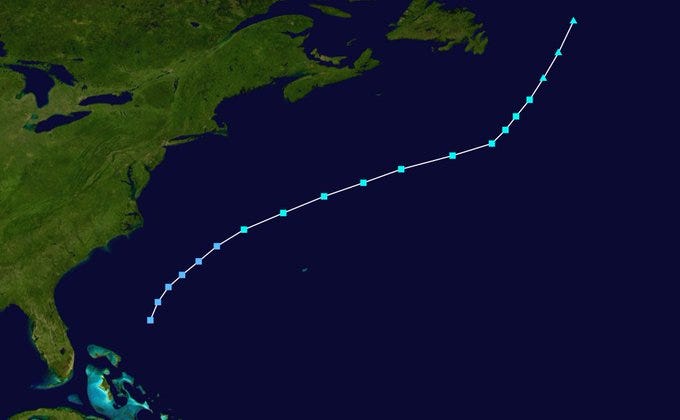
I have recently documented how the Proceedings of the National Academy of Sciences (PNAS) — supposedly one of the top science journals — published a paper using a “dataset” cobbled together by some interns for marketing a now-defunct insurance company. There is actually no such dataset out in the real world — it is a fiction. The paper is the only normalization study purporting to identify a signal of human-caused climate change in disaster losses and thus has been highlighted by both the IPCC and U.S. National Climate Assessment. That context makes its correction or retraction politically problematic. When I informed PNAS about the fake dataset they refused to look at it and stood behind the paper. Read about the backstory and how PNAS stonewalled any reconsideration.
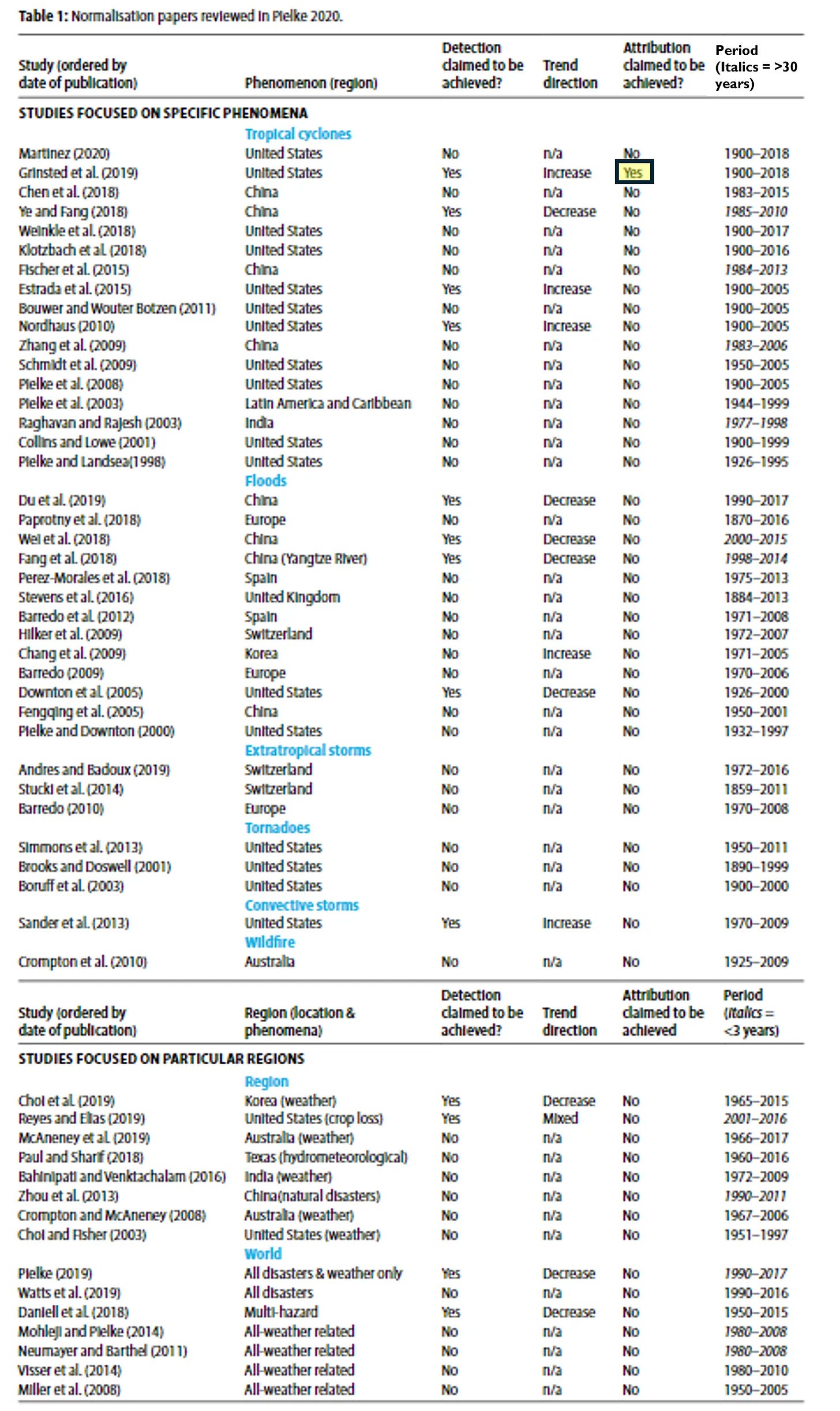
The Alimonti Retraction for an Unpopular View
The science community has shown a willingness to retract a climate science paper — in this case not for being wrong in any substantive way, but instead for expressing views that are politically unhelpful. In 2022, a group of Italian scientists published a paper that summarized the IPCC’s conclusions on extreme weather trends, consistent with what you’ve been reading here at THB. The paper broke no new ground but was a useful review to have in the literature. Even so, several activist journalists and scientists demanded that it be retracted — and, remarkably, the Springer Nature journal that published the paper obliged. I heard from a whistleblower who shared all of the sordid details, where you can read about here and here.
A Major Error in the IPCC
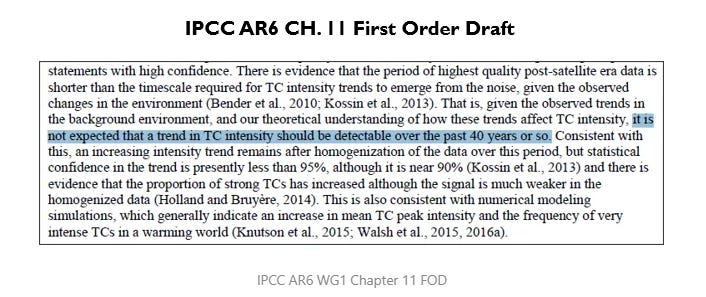
The IPCC is a massive effort, and if it did not exist we’d have to invent it. It is not surprising that a few mistakes can creep into the assessment. What matters is what happens when mistakes are made. I identified a major error in the IPCC AR6 Synthesis Report involving confusion over hurricane intensities — It was a simple error having to do with technical terminology that was misunderstood (hurricane fixes, i.e., measurements — became reinterpreted as hurricanes). At least once a week someone quotes to me the mistake in the IPCC Synthesis Report to claim falsely that hurricanes have become more intense. You can read here about the error and also how an IPCC insider later revealed to me that the error resulted from the IPCC’s failure to follow its own quality control protocols.
Billion Dollar Disasters as the Best Indicator of Climate Change
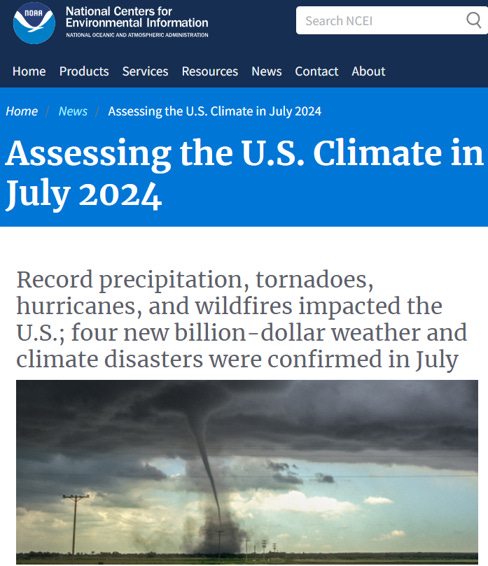
For more than a decade I have evaluated the so-called “billion dollar disaster” tabulation promoted by the National Oceanic and Atmospheric Administration (NOAA). I have watched it go from a clever marketing gimmick to NOAA”s leading scientific indicator representing climate change. The “dataset” employs methods that are not public and various versions of the tabulation includes entries and changes that are undocumented. I recently published a peer-reviewed paper documenting problems with the dataset and its complete intransparency. Despite the tabulation’s obvious flaws, it is a good example of bad science that is too big to fail. You can read about its many issues here and here.
A Love Affair with Extreme Emissions Scenarios
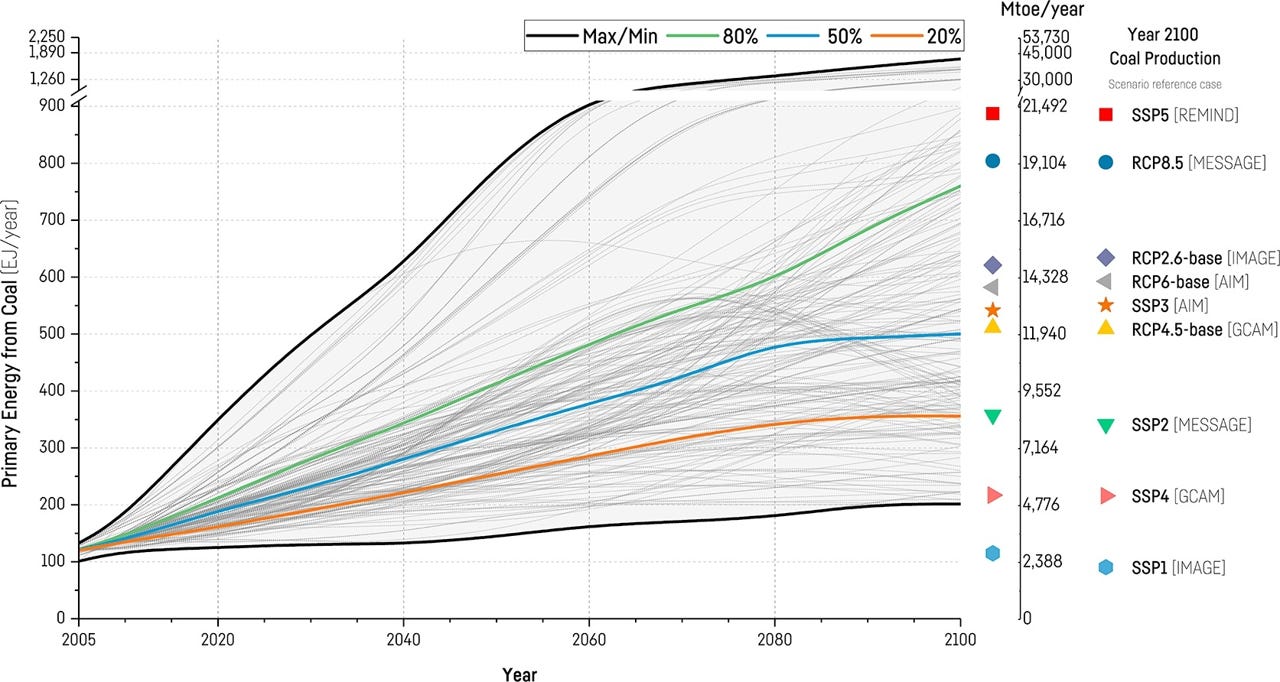
The top of the table won’t be a surprise to longtime readers of THB. Extreme emissions scenarios that map out implausible and even apocalyptic futures are a favorite in climate research and assessment. This space continues to be dominated by a scenario called RCP8.5 — which has coal consumption increasing more than 10x by 2100 (see figure above and all credit to my colleague Justin Ritchie). However, as the community comes to accept the ridiculousness of RCP8.5, efforts are being made to replace it with another extreme scenario — Right now that appears to be SSP3-7.0 which also foresees a massive increase in coal (~6x) and a world of about 13 billion people in 2100, far more than projected by the United Nations. You can read up on the backstory to how extreme scenarios ate climate science here and the community’s stubborn refusal to reorient here. Climate science and policy discussions are often grounded in the unreality of implausible scenarios, and course correction to date has proven impossible.
I considered some other scandals that did not make the cut. These include:
White House science integrity lead with science integrity issues.
The secret sauce in the U.S. social cost of carbon.
Climate scientist interferes in peer review.
WMO and UN misinformation on disasters.
Stern Review’s disaster projections.
I welcome your comments and questions. I am particularly interested in those in the climate science community who would like to take issue with or contest the list above. I am happy to publish such views here whether or not they are THB subscribers. One of the most interesting aspects of all this is how many times I hear from people who say — Yes, you are right about RCP8.5, billion dollar disasters, IPCC error etc. — and then say, but I cannot say that out loud. That is how self-correction in science starts to fail. Remember, THB is reader supported — If you are a subscriber please consider an upgrade to support independent research and writing!





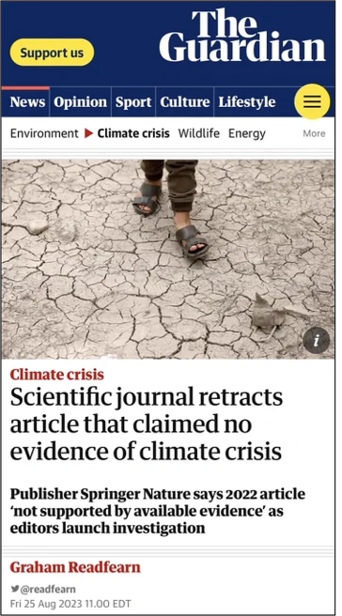
Has anyone tried posting this on Facebook yet? I’d like to inform my network, but 2 past attempts to share posts from THB resulted in (1) outright rejection plus warning and no response to my protest, then (2) rejection plus warning, then, after protest, reinstatement, saying it was a “technological error.” More recently, I posted my own views (w/o any links) on U.S. Energy Policy in relation to China. This was also rejected 90 minutes later w a warning and no opportunity to protest. This current THB post is such an excellent summary, I’d like to share. Will it just get rejected? I don’t want to get knocked off Facebook. I benefit from it despite its East German behavior.
We do know that C02 is greening the deserts, and we do know C02 is the primary plant sustenance, we do know that warmer climates produce more food than colder climates, and we do know that World Agricultural Production is increasing dramatically in the last few years.
The rest is speculation, and in the last 30 years such speculations, silent springs, population bombs, food shortages, ice free North Pole, fossil fuels depleted by the year 2,000, and so on, has proven to be just that, speculation, but for some unscientific reason, always negative speculation.
Odd that! 😀
The problem is not the scientists.
It's not the scientists who are saying we have only 5/10/15 years to save the planet.
It's the left wing politicians and their pals in the left wing media, like, Algore, Kerry, Biden, Greta, et al. and "journalists", who lie about what the scientists actually are saying. They leave out all the qualifiers like "if", "then", "could", with "nth degree of confidence"
Why do they do this?
It's become solely about politics and money!
In order to get the 50 to 100, to 275 trillion dollars they say will fine tune the Earth's temperature within one or two degrees, in 50 or 100 years from now. (and refusing to acknowledge any benefits from a slightly warming world.) the only weapon they have is fear!